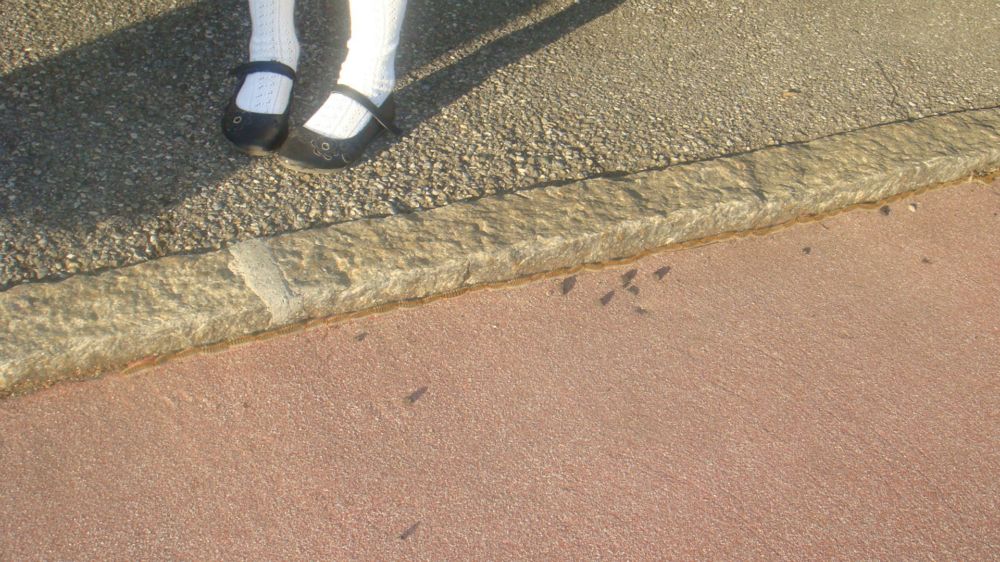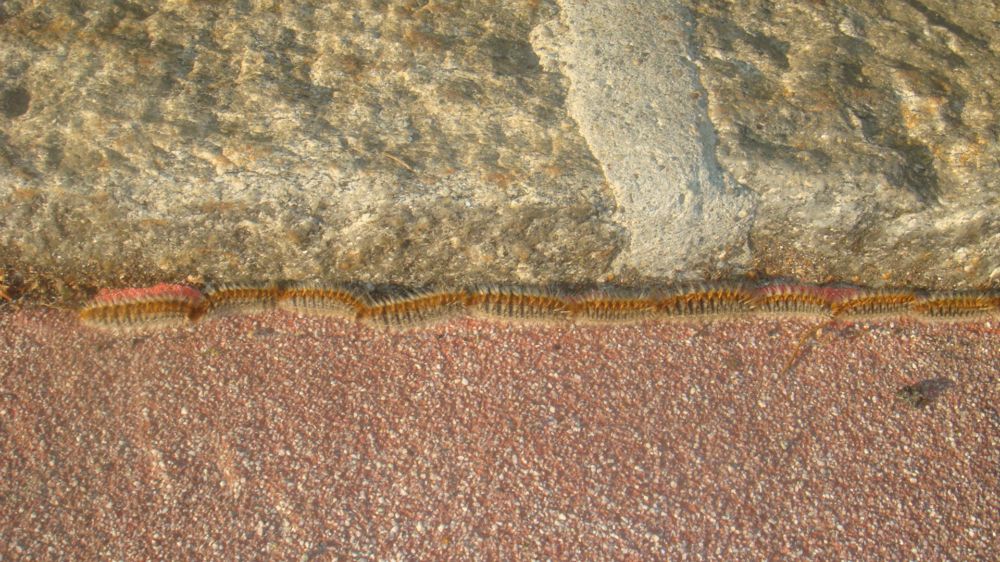The marching caterpillars are out in force this season! Have you seen them around? Do you know what to look out for?
The caterpillars are around 3 to 4 centimetres long. They’re covered with thousands of pointed hairs and can have either a rusty, or yellow, colour running along their back.
In terms of the lifecycle, Pine and Oak processionary moths lay their eggs in Pine and Oak trees during the summer months and the eggs stay in the trees over winter.
In spring time, the caterpillar larvae hatch from the eggs and start to become active. They create large nests in the trees for the caterpillar colonies to live in – the nests can look a bit like cobwebs or candy floss.
When the caterpillars run out of food from the tree that they’re living in, they come down the tree, all at once – looking for somewhere else to set up camp. It’s at this point that you might notice the caterpillars marching along the ground. They’re called ‘marching caterpillars’, or sometimes ‘processionary caterpillars’, because they literally move along, following each other head-to-tail in single file, in a procession.
The trouble is that the caterpillars can cause some problems for humans. That’s because their hairs contain a toxin that can be highly irritating to humans. The hairs can break off very easily and can become airborne easily and so be carried on the wind.
Not everyone who comes into contact with the caterpillar hairs will react to the toxin. If a person does react, the severity of the reaction will vary from person to person.
The most common problem is an irritating, itchy skin rash. It’s like small, red, slightly swollen bumps on the skin. The rash might only last for a few hours but sometimes it can become scaly and eczema-like and last for a few weeks.
It’s also possible to breathe in some of the airborne hairs. This can lead to wheezing and difficulty breathing, particularly in people who already suffer from asthma.
And the hairs may also irritate the eyes in some people, causing itchiness and redness.
Very rarely, the caterpillar hairs can trigger a severe allergic reaction (an anaphylactic reaction) in some people.
Because of the potential health risks, it’s very important to stay away from the caterpillars where possible. Avoid any trees where you can see the nests. If you see the caterpillars on the ground, don’t handle them in any way.
And if you’re worried that there is a colony in one of the trees in your garden, DON’T try to get rid of the nest yourself. Even when the nests are empty, they can still contain large amounts of the caterpillar hair because the caterpillars moult inside the nest. If you try to knock down or disturb a nest, then this can make the hairs airborne and easy to inhale.
Call the experts in – your local commune may be able to advise about professionals in your area who are equipped to remove nests.
If your skin does come into contact with the caterpillars or their hairs, then you need to remove them as soon as possible.
If available, put on a pair of gloves to protect your hands whilst doing this. Wash your hands and the affected area of skin with copious amounts of soap and water.
Any rash can be treated with antihistamines – either in cream or tablet form – go and discuss the rash with a local pharmacist, or of course, see your doctor if you’re worried.
And what if you think you’ve inhaled some of the hairs and you develop breathing difficulties?
Anyone known to have asthma already can take their reliever inhaler to help open up their airways and see if this works.
Anyone with severe symptoms should see a doctor, or may even need to call an ambulance in extreme cases.
 Look carefully at the angle between the curb and the road
Look carefully at the angle between the curb and the road
 Marching caterpillars on the move!
Marching caterpillars on the move!
Written by Dr Michelle Wright
Disclaimer: Click here to read our full disclaimer.





